- B-Stock Polish Pottery – Sorted & Unique
- Bowls
- Butter Dishes
- Mugs
- Plates
- More
- Jars

- Outlet

- Baking Dishes made of Boleslawiec Pottery

- Polish Pottery Platters – Wide Selection of Shapes & Sizes

- Jugs & Pitchers – Wine, Water, Juice, Milk – Polish Pottery

- Wintry

- Decoration
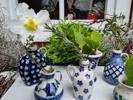
- Teapots & Coffee Pots in Bolesławiec Polish Pottery

- Artists

- Faith – Christianity – Polish Pottery

- 1000 and a cup

- Custom made

- Exclusive Polish Pottery
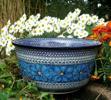
- Gift Voucher for Polish Pottery – Give Handcrafted Quality

- Over 4600 Polish Pottery Patterns

- Unique pieces Polish pottery

- Polish Pottery Sets & Second Choice – Beauty at a Great Price

- Saucier – Cooking with Polish Stoneware

- Soup Kitchen – Polish Pottery

- Complete service

- Exhibition Room

- Bathroom & WC – Polish Pottery by Ceramika Artystyczna

- Pizza Baking – Polish Pottery

- Vases in Polish Pottery – Ceramika Artystyczna
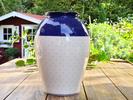
- Chef Pâtissier – Sweet and Savoury – in, on and with Polish Pottery

- Garde-Manger – Cooking with Polish Pottery Tableware

- Plongeur – Cleaning Polish Pottery Tableware

- Rôtisseur – Cooking with Polish Pottery

- Polish Pottery Sets at Discount Prices

- For the Danish Kitchen – Ceramic Tableware

- Grillardin – Grilling, Smoking & Barbecue with Polish Pottery

- Bulk Discount – Save on Polish Pottery
- Customer Service & FAQs – Polish Pottery
- Sweet Dreams

- For the German Kitchen – Polish Pottery Tableware

- The History of Polish Pottery
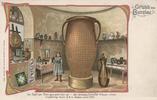
- For the Polish Kitchen – Polish Pottery

- For the Spanish Kitchen – Polish Pottery

- Ceramika Artystyczna - The Queen of Polish Pottery Ceramics

- Dishes for lovers

- Polish pottery gallery

- Sustainability

- Polish Ceramics from Ceramika Manufaktura

- Breakage-Free Guarantee – Safe Delivery of Your Polish Pottery
- Polish Pottery – Safe, Food-Safe & Everyday-Ready
- Reorder Guarantee – Your design available for many years
- Cookbook – Recipes and Cooking with Polish Pottery by Gourmet Chef Christian Kindervater

- Special Shipping Requests

- Gift Wrapping – Polish Pottery

- Trusted Shops Buyer Protection – Excellent Shop – Certified for 17 years (since 15/05/2008) – Bunzlauergrosshandel.de

- Jars
Currency
-
AED
(AED) -
ARS
(ARS) -
AUD
(A$) -
BGN
(BGN) -
BHD
(BHD) -
BRL
(R$) -
CAD
(CA$) -
CHF
(CHF) -
CNY
(CN¥) -
CZK
(CZK) -
DKK
(DKK) -
EUR
(€) -
GBP
(£) -
HKD
(HK$) -
HRK
(HRK) -
HUF
(HUF) -
IDR
(IDR) -
INR
(₹) -
JPY
(JP¥) -
MXN
(MX$) -
MYR
(MYR) -
NOK
(NOK) -
NZD
(NZ$) -
PHP
(PHP) -
PLN
(PLN) -
QAR
(QAR) -
RON
(RON) -
RUB
(RUB) -
SEK
(SEK) -
SGD
(SGD) -
THB
(THB) -
TRY
(TRY) -
TWD
(NT$) -
UAH
(UAH) -
USD
(US$) -
VND
(₫) -
XCD
(EC$) -
ZAR
(ZAR)
Country of delivery
- Australia
- Austria
- Belarus
- Belgium
- Brazil
- Bulgaria
- Büsingen, Deutschland
- Canada
- Croatia
- Cyprus
- Czechia
- Denmark
- Estonia
- Finland
- France
- Germany
- Greece
- Greece, Islands
- Helgoland, Germany
- Hungary
- Iceland
- India
- Ireland
- Israel
- Italy
- Japan
- Latvia
- Liechtenstein
- Lithuania
- Luxemburg
- Malta
- Monaco
- Netherlands
- New Zealand
- Norway
- Poland
- Portugal
- Republic of Korea
- Romania
- Russia
- Singapore
- Slovak Republic
- Slovenia
- Spain
- Spain, Balearic Islands
- Sweden
- Switzerland
- USA
- Ukraine
- United Arab Emirates
- United Kingdom
Polish Pottery Garlic Keeper – Tradition, Functionality, and the Power of Nature
This handcrafted garlic keeper from Ceramika Artystyczna combines artistic tradition, practicality, and a deep appreciation for nature’s gifts. With a capacity of approx. 900 ml, two sturdy handles, and four generous ventilation holes (each 1.8 cm in diameter), this jar ensures the perfect climate for keeping garlic fresh and full of flavor. The classic, hand-painted Polish pottery design makes it a unique accent in any kitchen, blending beauty and purpose.
The Origin of Garlic: From Central Asia to the World
Garlic (Allium sativum) is one of humanity’s oldest cultivated plants. Its origins can be traced back to Central Asia—especially the regions now known as China, Kyrgyzstan, and Uzbekistan. From there, garlic spread along ancient trade routes to the Mediterranean, India, and Africa, thousands of years ago.
In ancient Egypt, garlic was both food and medicine. The Greeks, Romans, and countless other cultures prized garlic for its invigorating, healing, and flavor-enhancing qualities.
Garlic Varieties: Diversity Around the Globe
There are hundreds of garlic varieties grown worldwide, each differing in flavor, color, size, and aroma. Notable types include:
White garlic: Classic and mildly aromatic, common in Europe.
Purple garlic: Often stronger, with purple-striped skins.
Asian varieties: Typically larger and milder, sometimes with violet or reddish bulbs.
Solo garlic (single clove): Forms one large clove instead of many small ones; very aromatic and convenient.
Wild garlic (e.g., ramsons): Botanically related, with its own distinctive flavor and culinary uses.
The Allium Family: Garlic’s Botanical Relatives
Garlic belongs to the amaryllis family (Amaryllidaceae), specifically the allium subfamily (Allioideae). Its close relatives include onions, leeks, shallots, chives, and wild garlic. These plants are characterized by their unique aroma and health-promoting sulfur compounds.
Nutritional Profile: Vitamins, Minerals & More
Garlic is more than a seasoning—it’s a true nutritional powerhouse, containing:
Vitamins: B1, B2, B6, C
Minerals: Potassium, calcium, magnesium, phosphorus, selenium, iron, zinc
Sulfur compounds: Allicin, ajoene, diallyl disulfide—responsible for its flavor, aroma, and many health effects
Flavonoids & polyphenols: Antioxidant plant compounds
Health Benefits:
Immune support: Garlic strengthens the immune system and helps fight infections.
Heart & circulation: Lowers cholesterol, regulates blood pressure, and supports healthy circulation.
Antioxidant & anti-inflammatory: Protects cells from damage and reduces inflammation.
Digestive aid: Stimulates digestion and supports a healthy gut flora.
Antibacterial & antiviral: Allicin acts against various pathogens.
Spiritual Significance of Garlic:
For thousands of years, garlic has not only played a vital role in medicine and cuisine, but also as a symbol of protection and power. In ancient Egypt, garlic represented strength. In many folk traditions, garlic has been used as a charm against “evil spirits” or misfortune—even today, garlic is hung as an amulet in some cultures.
Spiritually, garlic is seen as a plant of grounding, purification, and protection. It is believed to help balance energy, cleanse spaces, and strengthen both body and mind—a “shield” from negativity.
Conclusion:
A Polish pottery garlic keeper is more than a storage jar: it offers the ideal environment for fresh garlic, is a beautiful addition to any kitchen, and connects us with the timeless cultural and healing traditions surrounding garlic.
Top
EINZIGARTIG
The Polish Pottery wholesale company "Einzigartig" from Rheine has been a close partner and shape designer for two Polish pottery workshops for over 25 years.
The great-grandfather of today’s CEO, Christian Kindervater, was a master potter with his own workshop in Silesia: Gustav Laske.
Customer satisfaction has been very important to us — for over 150 years.
"Quality is something very rare and should be preserved"
Jonny Schindler
* All prices incl. VAT. Free shipping within Germany. International shipping.
Our Showroom
is open on Fridays from 15 to 18 o'clock, on other days we have only shipping.
Log in
Shipping
EU Shipping
Overview of standard shipping costs for:
Austria, Netherlands, Italy, France, Denmark, Belgium, Bulgaria, Estonia, Greece, Ireland, Croatia, Latvia, Lithuania, Luxembourg, Malta, Poland, Portugal, Romania, Sweden, Slovakia, Slovenia, Spain, Czech Republic, Hungary, Cyprus, Monaco
- Shipping cost: €6.90 via DHL / Hermes (Delivery time up to 10 working days)
International Shipping with DHL
For the following countries:
Australia, United States, Brazil, India, Iceland, Israel, Japan, Canada, New Zealand, Singapore, Ukraine, United Arab Emirates, Belarus, South Korea
- €50.42 per €200 order value
- Delivery time: 10 to 30 days
Shipping Overview with DHL
(Delivery time: 5 to 12 days) for:
Switzerland, Helgoland, United Kingdom, Norway, Iceland, Finland
Shipping costs are calculated based on the order value:
- Base price per parcel: €16.05
- Additional charges: €5.04 per started €100 order value
- Maximum order value per parcel: €400.00
- From €400.01 onward, a second parcel will be charged
Examples of Calculation:
à 100,00 16,05 + 5,04 = 21,09
100,01 – 200,00 16,05 + 10,08 = 26,13 €
200,01 – 300,00 16,05 + 15,12 = 31,17 €
300,01 – 400,00 16,05 + 20,16 = 36,21 €
400,01 – 500,00 32,10 + 20,16 + 5,04 = 57,30 €
500,01 – 600,00 32,10 + 20,16 + 10,08 = 62,34 €
GERMANY
1. Delivery to a pickup station
Delivery time: 2–10 business days
Cost: €0.00
2. Hermes home delivery fast
Delivery time: 1-3 business days
Cost: €3.99
3. DHL home delivery GO GREEN +
Delivery time: 1-2 business days
Cost: €8.90
4.Pickup from showroom
Address: Hünenborgstr. 17b, 48431 Rheine
Pickup available Fridays between 3:00 PM and 6:00 PM
Cost: €5.00









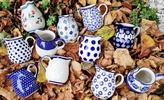
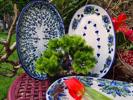



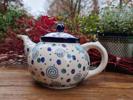

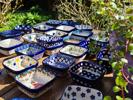
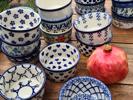
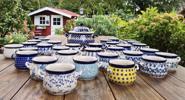
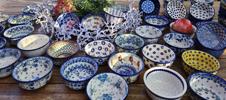
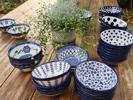




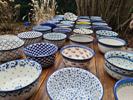



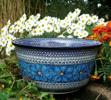

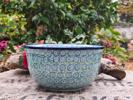

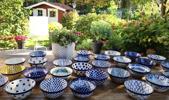



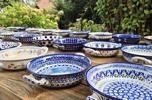


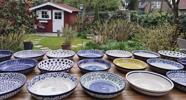


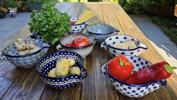






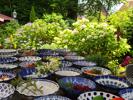





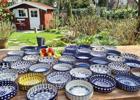
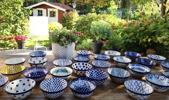











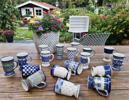
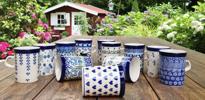

















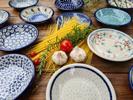
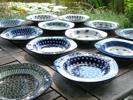


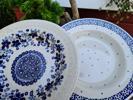






 Plenty Lions
Plenty Lions